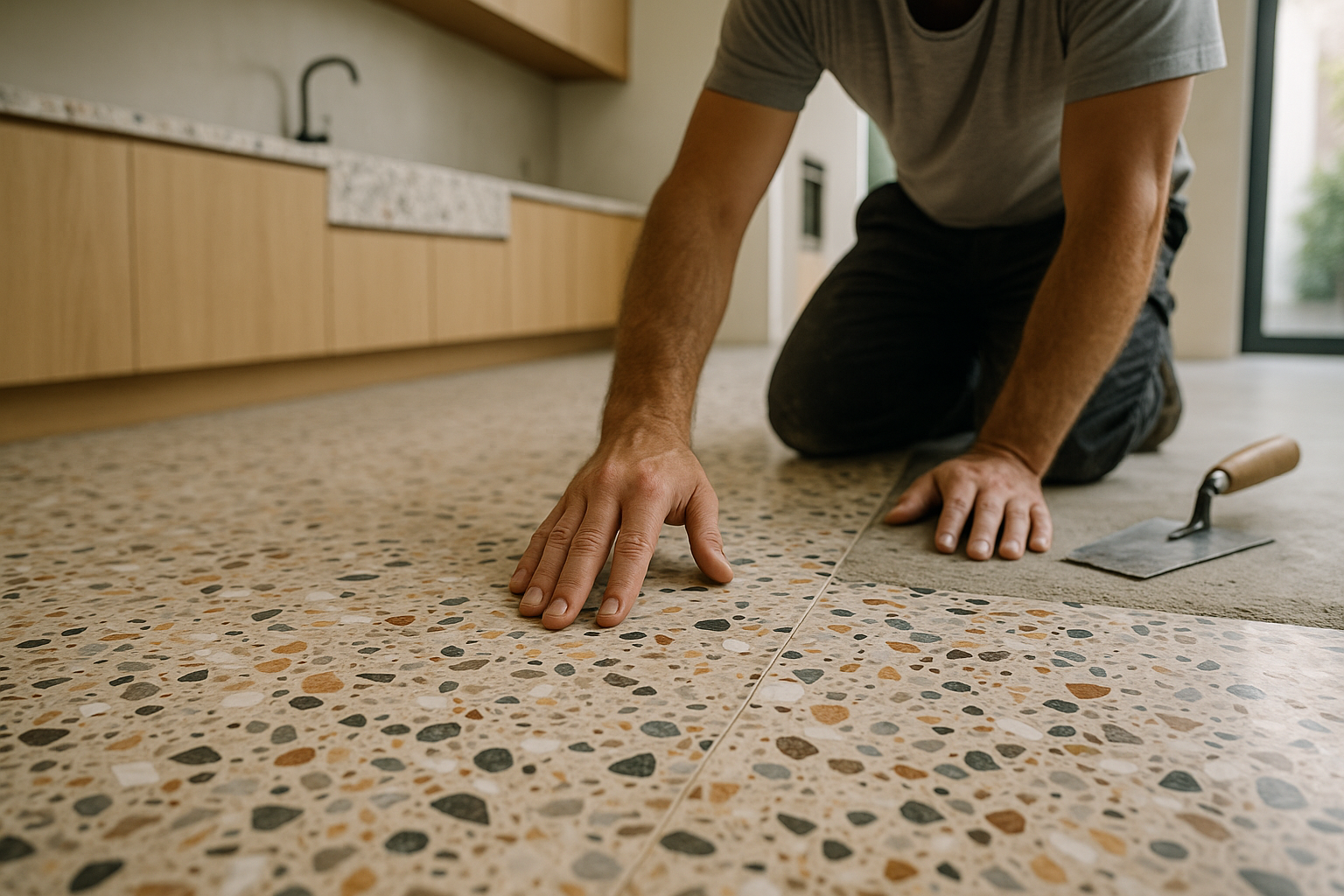Exploring the World of Liquid Stone Flooring Installation
Liquid stone flooring offers a unique combination of durability and visual elegance, making it a popular choice for modern homes. Its seamless finish, resistance to wear, and wide range of design options create a sleek, contemporary look that enhances both style and functionality in any space.

When considering modern flooring options, liquid stone stands out as a material that bridges the gap between functionality and visual elegance. Unlike conventional flooring systems that rely on tiles or planks, liquid stone is applied as a pourable mixture that hardens into a continuous surface. This method eliminates grout lines and creates a uniform appearance throughout the space. The material itself consists of crushed natural stones such as marble, granite, or quartz mixed with epoxy or polyurethane resins, resulting in a surface that combines the beauty of natural stone with the resilience of modern polymers.
The Installation Process of Liquid Stone Flooring
Installing liquid stone flooring requires careful preparation and skilled application to achieve optimal results. The process begins with thorough surface preparation, where the existing substrate must be cleaned, leveled, and free from moisture, oils, or debris. Any cracks or imperfections in the concrete base should be repaired to ensure proper adhesion. A primer coat is typically applied to seal the substrate and enhance bonding between the base and the liquid stone mixture.
Once the primer has cured, the liquid stone material is mixed according to manufacturer specifications. The mixture is then poured onto the prepared surface and spread evenly using specialized tools such as trowels or squeegees. Installers work methodically to ensure uniform thickness across the entire area, typically ranging from one-eighth to one-quarter inch. The material begins to cure within hours, though complete hardening may take several days depending on environmental conditions and product formulations.
After the initial curing period, the surface undergoes grinding and polishing to reveal the embedded stone aggregates and achieve the desired level of gloss. Multiple passes with progressively finer grinding pads create a smooth, reflective finish. Finally, a protective sealer is applied to enhance stain resistance and simplify maintenance. The entire installation process typically spans three to seven days, depending on the project size and complexity.
Advantages of Liquid Stone Flooring
Liquid stone flooring offers numerous benefits that make it an attractive option for various applications. The seamless nature of the installation eliminates joints and grout lines, creating a hygienic surface that resists moisture penetration and bacterial growth. This characteristic makes liquid stone particularly suitable for bathrooms, kitchens, and commercial spaces where cleanliness is paramount.
Durability ranks among the most significant advantages of liquid stone flooring. The combination of natural stone aggregates and polymer resins produces a surface that withstands heavy foot traffic, impacts, and abrasion better than many traditional flooring materials. When properly maintained, liquid stone floors can last decades without requiring replacement, making them a cost-effective long-term investment.
The aesthetic versatility of liquid stone allows for extensive customization. Property owners can select from a wide range of stone types, colors, and aggregate sizes to achieve their desired appearance. The polished finish reflects light beautifully, enhancing the perceived spaciousness of rooms and creating an upscale ambiance. Additionally, liquid stone can be applied over existing concrete surfaces, often eliminating the need for demolition and reducing installation costs compared to complete floor replacement.
Considerations and Challenges
Despite its many advantages, liquid stone flooring presents certain considerations that potential buyers should understand before committing to installation. The initial investment for liquid stone flooring tends to be higher than conventional options such as ceramic tile or laminate. Professional installation is essential, as improper application can result in surface defects, uneven curing, or adhesion failures. Homeowners should budget accordingly and select experienced contractors with demonstrated expertise in liquid stone systems.
Temperature sensitivity during installation requires careful planning. The curing process of polymer resins is affected by ambient temperature and humidity levels. Installation during extreme weather conditions may compromise the final result, necessitating climate control measures or seasonal scheduling. Additionally, the grinding and polishing phases generate significant dust, requiring proper containment and ventilation to protect indoor air quality.
Maintenance requirements, while generally minimal, differ from traditional flooring materials. Periodic resealing is necessary to maintain stain resistance and surface protection, typically every two to five years depending on traffic levels and usage patterns. Harsh chemical cleaners can damage the sealer and should be avoided in favor of pH-neutral cleaning solutions. Surface repairs, while possible, may be more complex than replacing individual tiles, as matching the existing finish requires skill and experience.
The weight of liquid stone flooring also warrants consideration, particularly in upper-level installations or buildings with weight restrictions. The combination of stone aggregates and resin creates a dense material that adds substantial load to the underlying structure. Structural assessments may be necessary to ensure adequate support capacity before proceeding with installation.
Maintenance and Long-Term Care
Proper maintenance extends the lifespan and preserves the appearance of liquid stone flooring. Regular sweeping or dust mopping removes abrasive particles that could scratch the surface over time. Damp mopping with mild, pH-neutral cleaners effectively removes dirt and maintains the floor’s luster without damaging the protective sealer. Spills should be cleaned promptly to prevent potential staining, particularly from acidic substances that can etch the surface if left unattended.
Periodic professional maintenance, including deep cleaning and resealing, helps maintain the floor’s protective barrier and aesthetic appeal. High-traffic areas may benefit from more frequent attention to address wear patterns before they become pronounced. With consistent care, liquid stone flooring retains its beauty and functionality for many years, justifying the initial investment through reduced replacement costs and sustained performance.
Liquid stone flooring represents a sophisticated solution for those seeking durable, customizable, and visually striking flooring. Understanding the installation process, recognizing the material’s advantages, and acknowledging potential challenges enables informed decision-making. When installed by qualified professionals and maintained according to recommended practices, liquid stone flooring delivers lasting value and enhances the character of residential and commercial spaces alike.




